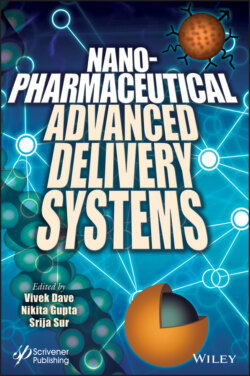Читать книгу Nanopharmaceutical Advanced Delivery Systems - Группа авторов - Страница 18
1.3.2 Solid Lipid Nanoparticles
ОглавлениеSolid lipid nanoparticles (SLNs) were introduced in 1991, which are the most conventional carrier system compared to other lipid carrier systems. Although some polymer-based nanoparticles were developed, still they have certain disadvantages such as toxicity, residual organic solvents, and processing complication [29, 30]. SLNs were incorporated into an inert solid lipid that offers sufficient stability and protection to encapsulated drugs as shown in Figure 1.2 [31, 32]. SLNs also offer unique features of a small size range micro-colloidal carrier between 50 and 1000 nm, larger surface area, higher drug loading, and potential for delivering drugs across various barriers [33-36].
By definition, SLNs are submicron size nanoparticles composed of biocompatible and biodegradable solid lipids and are dispersed in aqueous surfactant solution; these mixtures are capable of providing a stable product for both lipophilic and hydrophilic drugs. For many years, they have become a promising platform for therapeutic drug delivery [37, 38] because they are simple, flexible, and stable for long term, have high drug loading efficacy, have potential for targeted responses [30, 31], have increased bioavailability, and do not require any special solvent and application versatility [33, 34]. SLNs for various routes of administrations such as dermal, parenteral, ocular, and rectal routes have been extensively studied and developed [39].
